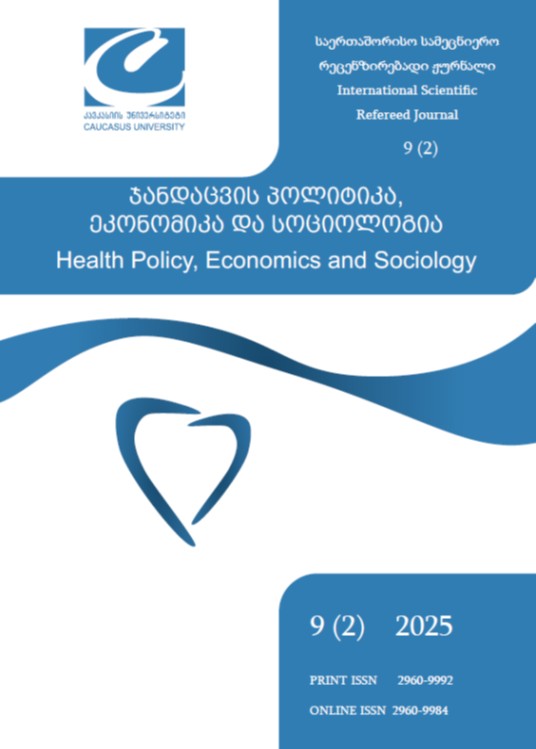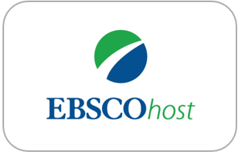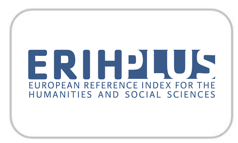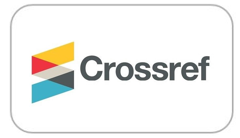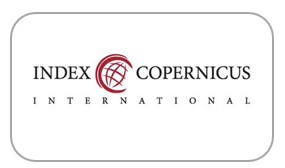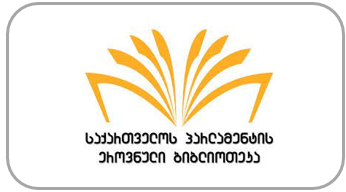Ischemic Stroke in Young Adults: Emerging Trends and Risk Factors
Keywords:
Stroke awareness, Public health, Early-onset stroke, Stroke trends, Socioeconomic disparities, Lifestyle factors, Stroke prevention, Stroke diagnosis, Risk factors, Stroke incidence, Young adults, Ischemic strokeAbstract
Introduction: Ischemic stroke, once predominantly associated with older adults, is increasingly affecting individuals aged 18–50—commonly regarded as the most productive age group in society. This shift poses significant physical, psychological, social, and economic consequences. The objective of this study is to investigate the rising incidence of ischemic stroke among young adults, analyze associated risk factors, examine diagnostic challenges, and explore preventive strategies. Methodology: A systematic literature search was conducted in PubMed, Sci-Hub, and Google Scholar using keywords related to ischemic stroke in young adults. Peer-reviewed English-language articles published between April 2009 and August 2023 were screened. Following title and abstract review, 10 relevant studies were selected for detailed analysis based on predefined inclusion criteria focusing on incidence trends, risk factors, diagnosis, and prevention. Results: Out of 232 initially identified studies, 10 met the inclusion criteria and were analyzed. Five studies documented a significant rise in ischemic stroke cases among young adults over recent decades. Three studies highlighted modifiable lifestyle-related risk factors such as smoking, dyslipidemia, hypertension, obesity, and substance use. Two studies addressed diagnostic challenges, emphasizing misdiagnoses or delayed recognition due to the age of patients. Additional studies underscored the lack of awareness and inadequate prevention strategies, especially in low- and middle-income populations. Socioeconomic factors and gender disparities were also identified, with males and economically disadvantaged individuals more frequently affected. Discussion: The findings point to a multifactorial rise in stroke incidence among young adults, driven largely by lifestyle changes and unmet healthcare needs. Despite existing data, inconsistencies in age classification, geographic coverage, and diagnostic approaches limit comprehensive understanding. Notably, diagnostic errors and lack of tailored clinical guidelines contribute to delayed interventions. Preventive measures such as tobacco control, digital health tools, and affordable screenings remain underutilized, especially in resource-constrained settings. Conclusion: The increasing incidence of ischemic stroke in young adults demands urgent public health attention. There is a need for more granular, region-specific data and consistent age-group analysis. Greater clinical vigilance, awareness campaigns, and preventive strategies—especially among vulnerable populations—are essential. By improving early detection and addressing lifestyle and socioeconomic risk factors, healthcare systems can reduce premature mortality and long-term disability in young adults.
References
Béjot, Y., Daubail, B., Jacquin, A., Durier, J., Osseby, G. V., Rouaud, O., & Giroud, M. (2014). Trends in the incidence of ischaemic stroke in young adults between 1985 and 2011: the Dijon Stroke Registry. Journal of neurology, neurosurgery, and psychiatry, 85(5), 509–513. https://doi.org/10.1136/jnnp-2013-306203
Béjot, Y., Delpont, B., & Giroud, M. (2016). Rising Stroke Incidence in Young Adults: More Epidemiological Evidence, More Questions to Be Answered. Journal of the American Heart Association, 5(5), e003661. https://doi.org/10.1161/JAHA.116.003661
GBD 2019 Stroke Collaborators (2021). Global, regional, and national burden of stroke and its risk factors, 1990-2019: a systematic analysis for the Global Burden of Disease Study 2019. The Lancet. Neurology, 20(10), 795–820. https://doi.org/10.1016/S1474-4422(21)00252-0
Ji, R., Schwamm, L. H., Pervez, M. A., & Singhal, A. B. (2013). Ischemic stroke and transient ischemic attack in young adults: risk factors, diagnostic yield, neuroimaging, and thrombolysis. JAMA neurology, 70(1), 51–57. https://doi.org/10.1001/jamaneurol.2013.575
Kissela, B. M., Khoury, J. C., Alwell, K., Moomaw, C. J., Woo, D., Adeoye, O., Flaherty, M. L., Khatri, P., Ferioli, S., De Los Rios La Rosa, F., Broderick, J. P., & Kleindorfer, D. O. (2012). Age at stroke: temporal trends in stroke incidence in a large, biracial population. Neurology, 79(17), 1781–1787. https://doi.org/10.1212/WNL.0b013e318270401d
Kivioja, R., Pietilä, A., Martinez-Majander, N., Gordin, D., Havulinna, A. S., Salomaa, V., Aarnio, K., Curtze, S., Leiviskä, J., Rodríguez-Pardo, J., Surakka, I., Kaste, M., Tatlisumak, T., & Putaala, J. (2018). Risk Factors for Early-Onset Ischemic Stroke: A Case-Control Study. Journal of the American Heart Association, 7(21), e009774. https://doi.org/10.1161/JAHA.118.009774
Larrue, V., Berhoune, N., Massabuau, P., Calviere, L., Raposo, N., Viguier, A., & Nasr, N. (2011). Etiologic investigation of ischemic stroke in young adults. Neurology, 76(23), 1983–1988. https://doi.org/10.1212/WNL.0b013e31821e5517
Moosa, A., Osama, D., Alnidawi, F., Algillidary, S., Hussein, A., & Das, P. (2023). Risk Factors, Incidence, and Outcome of Stroke: A Retrospective Cross-Sectional Hospital-Based Study Comparing Young Adults and Elderly. Cureus, 15(6), e40614. https://doi.org/10.7759/cureus.40614
Putaala, J., Metso, A. J., Metso, T. M., Konkola, N., Kraemer, Y., Haapaniemi, E., Kaste, M., & Tatlisumak, T. (2009). Analysis of 1008 consecutive patients aged 15 to 49 with first-ever ischemic stroke: the Helsinki young stroke registry. Stroke, 40(4), 1195–1203. https://doi.org/10.1161/STROKEAHA.108.529883
Tibæk, M., Dehlendorff, C., Jørgensen, H. S., Forchhammer, H. B., Johnsen, S. P., & Kammersgaard, L. P. (2016). Increasing Incidence of Hospitalization for Stroke and Transient Ischemic Attack in Young Adults: A Registry-Based Study. Journal of the American Heart Association, 5(5), e003158. https://doi.org/10.1161/JAHA.115.003158
